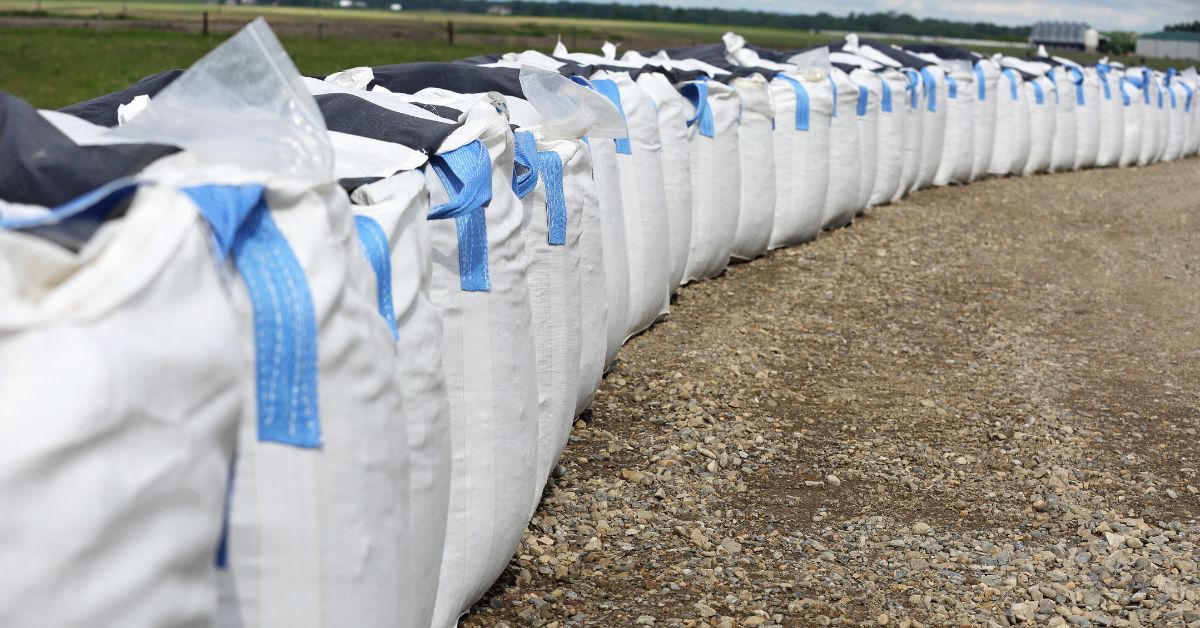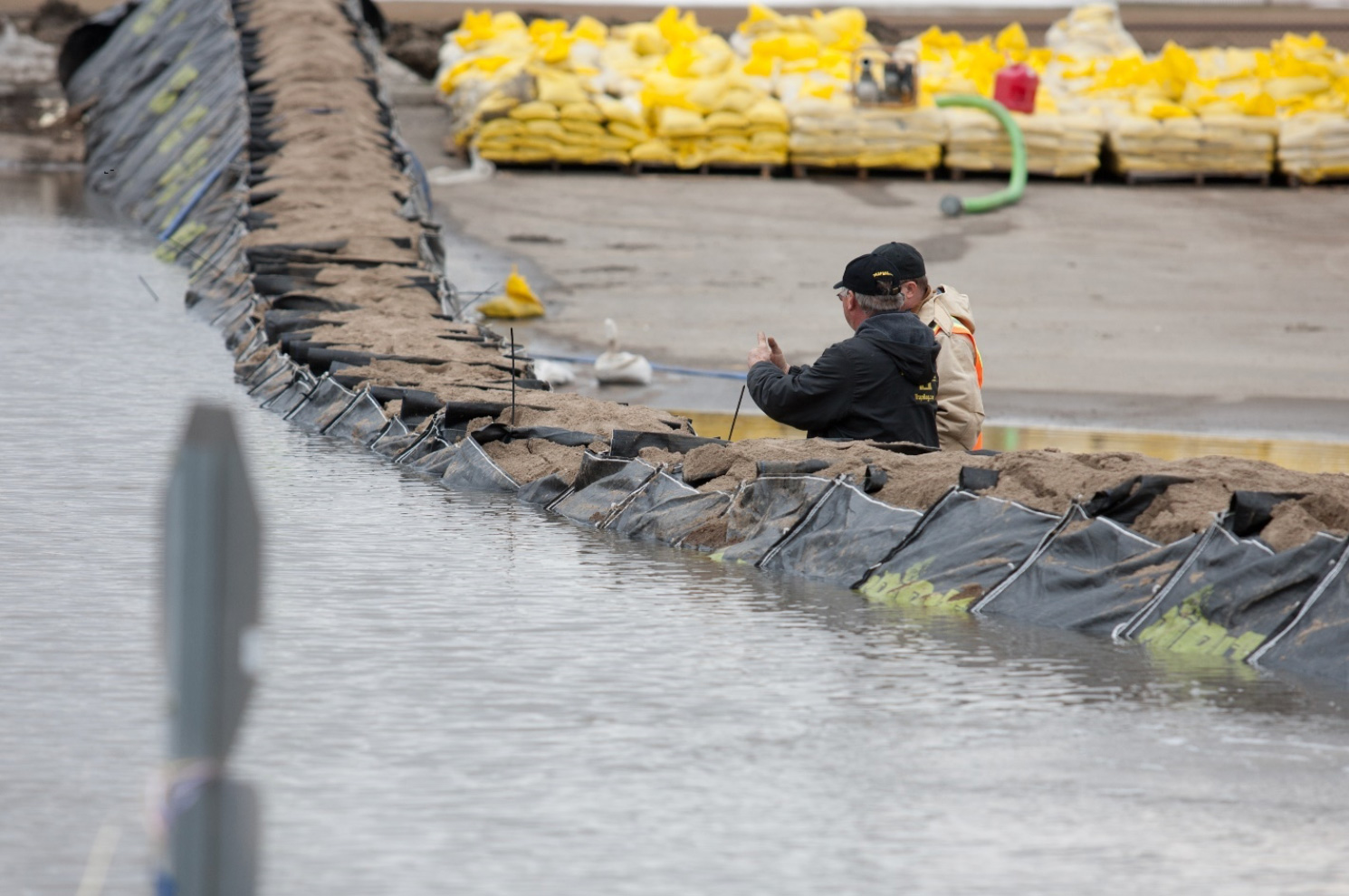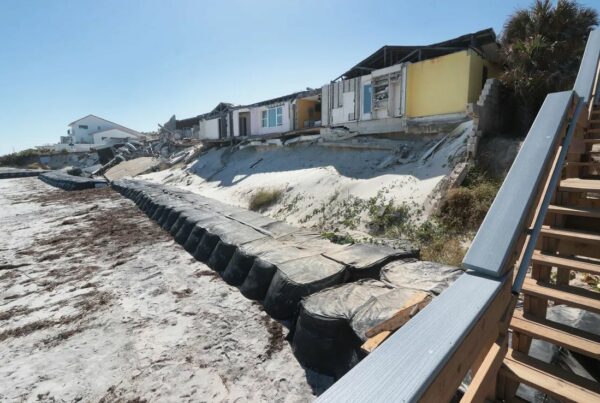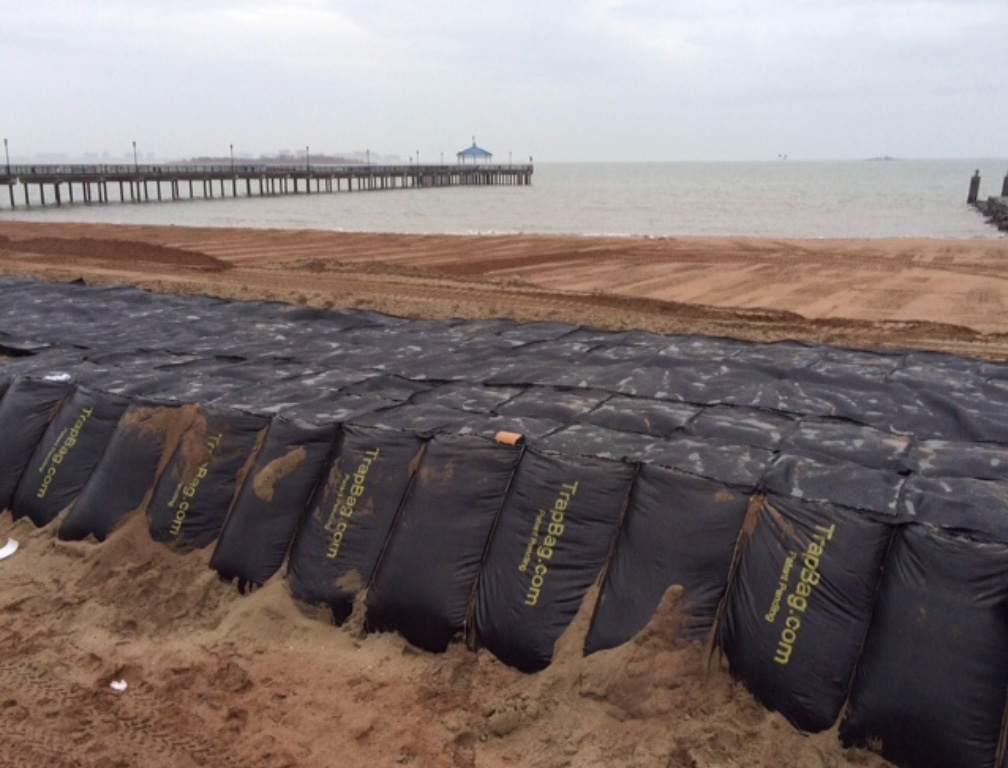Using TrapBag for Hurricane Flood Protection
TrapBag was designed first and foremost as a hurricane protection solution. Since then, it has become a trusted option for holding back powerful waves and storm surges in hurricane-prone areas across the world.
These storm surge barriers are reliable, affordable, and easy to deploy as a hurricane protection solution. It can prevent storm surges from devastating communities and reduce the need for expensive cleanups.
How TrapBags Are Deployed as Storm Surge Barriers
As a hurricane protection system, TrapBag is designed to be easy to assemble and install wherever you need it in a fraction of the time other systems need. Comprised of a series of cells made of high-strength geotextile, TrapBag is designed to withstand thousands of pounds of water pressure.
Each cell is self-contained but lends its strength to its neighboring cells. Unlike sandbags, if one cell becomes compromised during a hurricane, it will not affect the rest of the barrier.
Who We Serve
TrapBag works with agencies and organizations across the United States and worldwide to protect communities during hurricane season. Here are just a few of the groups we’ve worked with over the years:
Municipalities
Storm surges can devastate vulnerable communities and be life-threatening if not taken seriously, as seen when Hurricane Katrina struck New Orleans in 2005. Public works and other municipal departments use TrapBag as a rapid-deploy solution for hurricane storm surge protection to mitigate damage and protect lives during and after the storm.
Learn More »Civil & coastal engineers
TrapBag protects infrastructure such as bridges, highways, sewers, and stormwater systems in coastal areas from hurricanes. Because of this, civil and coastal engineers rely on it to mitigate damage and reduce the need for costly reconstruction projects.
Learn More »Emergency management
Emergency management crews need to work quickly to protect communities before hurricanes and tropical storms make landfall. TrapBag enables them to set up effective barriers in a fraction of the time needed for a standard sandbag barrier.
Learn More »Environmental protection services
Hurricanes can severely damage coastal wetlands, which act as a natural barrier for storm surges. Environmental protection organizations can use TrapBags to protect marshlands and the wildlife that call them home.
Learn More »Marine services
Hurricanes can damage, destroy, or wash away docks, piers, and other marine structures. Marine services can use TrapBag to protect or reinforce these structures during hurricanes and tropical storms.
Learn More »Projects
How TrapBags Compare to:
Sandbags have long been the only solution for temporary hurricane and flood protection. They’re relatively inexpensive and can be stacked to create a flood barrier that protects houses and other structures from storm surges.
However, with sandbags, you get what you pay for. Wave action can shred a sandbag and cause it to rip open relatively easily, or collapse an entire sandbag wall. In turn, this can cause a domino effect that makes the damage even worse. They’re also labor-intensive to fill—it can take days and thousands of sandbags to create a wall large enough to keep your community safe. By contrast, TrapBag can withstand all types of wave action to protect what matters most from storm surges.

As the name implies, these tubes are designed to divert water away from the areas behind them. They’re reusable and often use water as their fill material, so they’re handy for protecting homes in a pinch.
However, because they’re rarely more than a few feet in height, most water diversion tubes aren’t a practical solution for storm surge protection. TrapBags, however, start at 4 feet tall at a minimum. They’re also stackable, so emergency crews can create even taller barriers to withstand the storm surge.

Floodgate systems are a permanent solution that some municipalities use to protect low-lying areas from storm surges and coastal flooding during hurricanes. Crews can close the floodgates ahead of the storm to protect these vulnerable areas as it makes landfall.
However, constructing floodgates as hurricane protection systems can take a long time and is unfeasibly expensive for many communities. Realistically, they also can’t be installed everywhere. TrapBag can protect these areas just as well as a floodgate system for a fraction of the total cost.

Why Choose TrapBag for Hurricane Flood Prevention in Your Community?
TrapBag is similar to, but improves upon, the traditional design of sandbags. We constructed TrapBag specifically for hurricane protection, using a pentagonal shape to ensure their structural integrity. The barrier is sloped on one side and upright on the other for additional structural stability, so they can withstand severe wave action to prevent flooding. TrapBag barriers have much lower margins of error than traditional sandbag walls—the barrier is less likely to give way when your community needs it most.
TrapBag has been successfully tested by the U.S. Army Corps of Engineers for its ability to hold back floodwaters during hurricane conditions.


